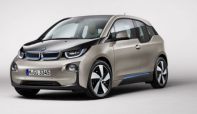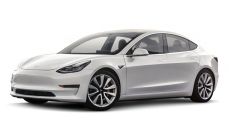An electrical network near limits
We note that all records of energy consumption fought year after year. The 103 GW were grazed in feb 2012. RTE forecasts confirm this trend, with 108 GW planned in 2020.
These peak demands induce the use of all means of production, polluting and expensive, associated with imported energy with our neighbors.
One might think that the deployment of millions of vehicles could only worsen the situation. This is indeed what would happen if the network utilization would remain the same as today ..
Management driven with a SmartGrid
However, players in the world of energy work to develop a smart network, made essential by facilities getting older and the advent of renewable energy.
China and the United States, who became aware of these issues, invested 7.3 billion respectively and 7.1 billion dollars in 2010 in SmartGrids. In Europe, Spain, which possesses a very large wind farm, will invest $ 807 million and France $ 265 million.
This smart grid will primarily aim to control optimal power while integrating the means of production and decentralized renewable energy (photovoltaic and small wind turbines).
It will be quite easy to drive the charge of electric vehicles, which lasts several hours. Thus, the electricity used can be cheap and renewable.
In this case the Electric Vehicle does not boost consumption peaks, and use in a better way these new modes of energy production.
A first level of management was to postpone and spread the load during the night or at certain times of day, can highlight an optimization of energy consumption.
This strategy is fully compatible with the use of vehicles recorded by EDF in a study of behavior.
The Electric Vehicle: an energy storage to use (Vehicle To Grid - V2GRID)
An average day trip of a french car is less than 35 km. However, the first electric vehicles have a range of 160km (soon 200km). The electric vehicle thus does not use energy that would allow to run the difference: 125 km.
Based on this observation, using this energy make sense, charged the night in the best ecological and economic conditions and the return on the network during the day. This usage is entirely consistent with the practices of parking and recharging (EDF study 12/2010).
This is the basic principle of Vehicle To Grid (V2GRID), currently experienced by GOOGLE on Toyota Prius plugin. Through constraints, offset by strong financial incentives,
3 million electric vehicles would decrease the peak in November 2010 to 7 GW (*).
This figure corresponds to 10% of the French fleet, will be best achieved in 2025.
7 GW in less correspond to the central fuel oil and coal, which release CO2 at a rate of 5000 to 10,000 tons per hour (source TEN). V2GRID strategy would therefore prevent the emission of 150 to 200 000 tons of CO2 during the peak days.
This scheme is a winner for all:
- The power producer optimizes its production facilities, including intermittent ones (wind and solar).
- The energy operator buys energy at the best price at night ans sells at full price during the day.
- The citizen-consumer purchases electricity at a competitive price in return for a constraint consisting in connecting the vehicle before and after a working day. He has the satisfaction of using a truly green vehicle.
The project BETTER PLACE consisting in exchanging batteries in dedicated charging stations also relies on the injection energy on the network for its business model.
Conclusion
Far from the (very) common idea consisting in thinking that the electric vehicle worsens the electric network because f increased consumption peaks, it may instead deleting them and smooth the production of electrical energy. In addition, it will be best way to integrate renewable energy in the network, in optimal conditions.
The economic model is relevant : it will likely to happen.
Author
Associate Professor of Electrical Engineering



Contact :
Jean-Charles PAPAZIAN
06 86 47 72 52

SMARTGRID - V2GRID
The Electric Vehicle : an opportunity for the Grid




Charging infrastructure




Réalisations